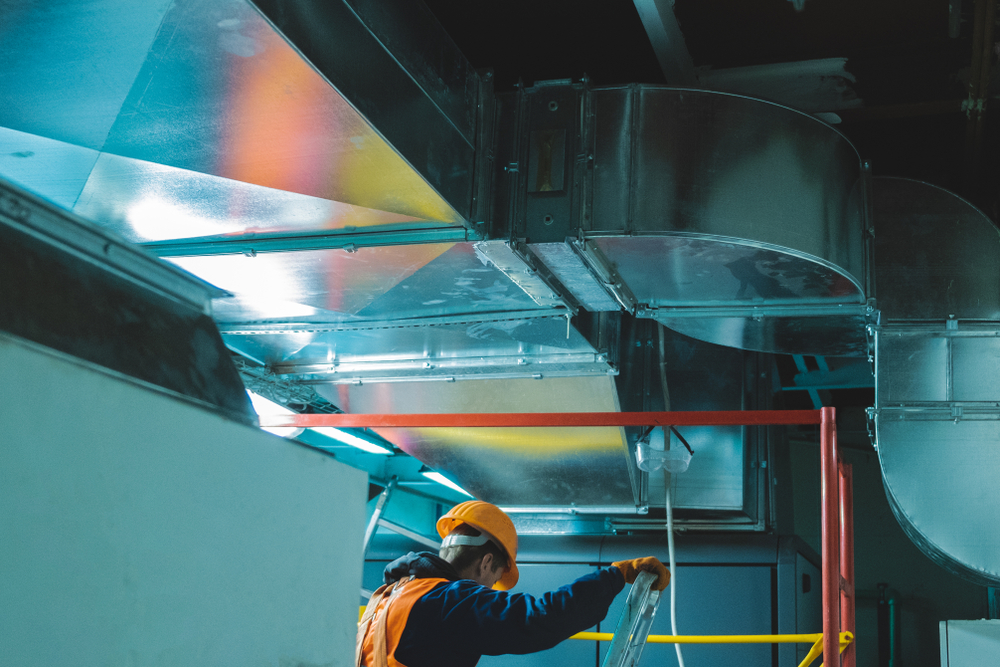 While you’re on the job site, there will be times when you are working inside a building or a space that isn’t well-ventilated. Without the right equipment, you could be putting yourself or your employees at risk. Good ventilation is the best way to protect your health, especially when you’re working with chemicals. Here are a few things you should think about when planning ventilation for your construction projects.
While you’re on the job site, there will be times when you are working inside a building or a space that isn’t well-ventilated. Without the right equipment, you could be putting yourself or your employees at risk. Good ventilation is the best way to protect your health, especially when you’re working with chemicals. Here are a few things you should think about when planning ventilation for your construction projects.
Common Types of Ventilation
The type of ventilation that you need depends on your working environment. In many cases, a building may have certain types of ventilation systems already in existence. There are a few common types of ventilation that you should know about, including:
- Natural: Using windows and doors to provide fresh air
- Exhaust: Using a fan to draw air out of the building
- Balance ventilation: Provides a fresh supply of air at the same rate as exhaust
It’s worth keeping in mind that a structure that is enclosed but only partially finished may not have adequate ventilation. You should also know that natural ventilation is often insufficient, especially if you are working with anything that produces harmful exhaust.
VOCs and Chemicals
Although any business may have to deal with the side effects of VOCs and certain types of chemicals, construction makes both much more common. Building materials can off-gas VOCs like formaldehyde for years after construction is complete. However, they’re more likely to do so at the very beginning. As such, you should have a plan to air out rooms at various points in the construction process. This is also true for areas in which you will be using noxious chemicals. It may be necessary to use spot ventilation techniques and additional personal protective equipment to protect yourself and others working on the jobsite.
Fuel-Burning Appliances and Tools
Fuel-burning appliances and tools are popular on the construction site. They offer a higher amount of power without the need to connect to an electrical system. You might use them to provide heat on cold days. The chief concern is that fuel-burning equipment produces exhaust, which can turn into carbon monoxide. Certain appliances and tools are rated for indoor use because they contain a sensor that will turn them off of the oxygen level gets too low. However, sensors can fail, and you should not assume that an enclosed space is safe for using this equipment. You should plan to use spot ventilation and PPE whenever you’re using anything that burns fuel without an exhaust venting directly outside.
Spot Ventilation Options
In most cases, you’re going to want to take advantage of spot ventilation. You’ve got a variety of possibilities, and you may need more than one:
- Built-in exhaust fans
- Portable fans
- Open windows and doors
- Air purifiers
Keep in mind that fans come with different levels of power, and the right one depends on the amount of circulation that you need. In some cases, a circulating fan that you might use at home would be helpful. In other cases, you’ll need a high-powered fan that can circulate hundreds of cubic feet within minutes.
Additional Personal Protective Equipment
Ventilation does a couple of things for the air quality of the job site. The first is ensuring that the workspace is generally free of harmful fumes. The second is protecting people who are in the workspace at the present moment. The efficacy of the second depends heavily on the type of ventilation, as well as what you’re doing. In many cases, it may make sense to use masks and ventilators with breathable filters during construction work. After all, ventilation can remove contaminants, but the system may not be able to neutralize the risk immediately. Your use of a mask or ventilator may prevent injury or long-term health concerns, in addition to any steps you take to increase ventilation.
Ventilating your workspace is one way that you can keep yourself and your employees safe. To learn more about how to run a contracting business, visit CSLS today!